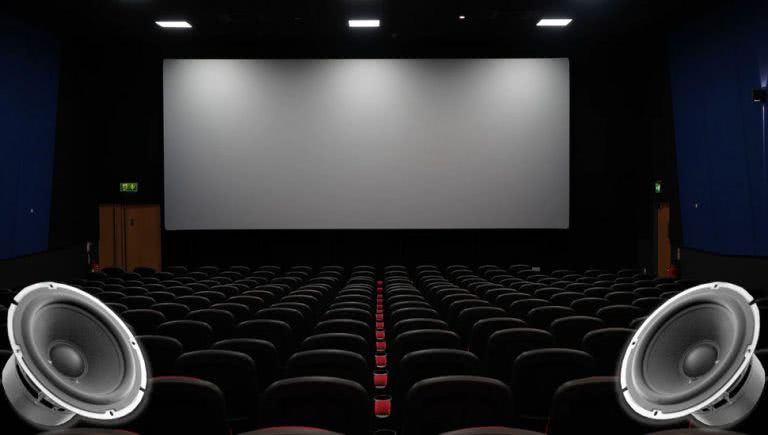Ever wondered how your favourite sound effects came to life in movies?
As we all are probably consuming much more media than usual, we’re likely gaining a little bit of an inkling that not all movies curate their own sounds individually, meaning that there’s a lot of recycled sound effects constantly being used. And, there’s a good reason for that. They take skill, time, and quite a bit of finicking to get them to reach perfection.
Sure, some can happen by chance, and then become iconic after years, and years of use. But others have been created by combining just the right amount of sounds of different instruments, objects, and voices that are recorded at just the right time with just the right effect.
But, not all of them are produced simply by vocals like the iconic Wilhelm Scream or the memorable Tarzan Yell. Some, like the typical Lightsaber sound were created using key methods of combining different sounds, and being quite handy with the microphone.
So, let’s take a journey through seven of the most iconic sound effects used in movies that are beyond recognisable, and find out a little more about how they’re made.
The Wilhelm Scream
First originating from the 1951 film Distant Drums, the Wilhelm Scream clocks itself as one of the most recognisable sound effects to date, being used in over 400 films and television series thus far.
Most notably, you’ll be able to catch this iconic scream in Star Wars, several Disney films such as Toy Story, Cars, and Aladdin, as well as in many films by Quentin Tarantino.
Tarzan Yell
Appearing around the 1930s, the classic Tarzan Yell originated in the 1932 film Tarzan The Ape Man. Well-known for it’s ululating sound, the sound effect’s creation is speculated to be by Lloyd Thomas Leech who was an opera singer.
Found in many Tarzan-like movies, the sound effect classically appears in Disney’s Tarzan, and even has a version emitted from Chewbacca in the original Star Wars trilogy.
Lightsaber
With all this talk about the Star Wars enterprise using several iconic movie sound effects, we certainly can’t forget one of the most memorable ones of all time – the humble Lightsaber’s woosh.
Developed by Ben Burtt, a sound designer, the legendary effect was created with a combination of the interference of a television and movie projector motors idling while recorded by a shieldless microphone.
The THX Intro
Some iconic sound effects aren’t even featured in the movies themselves, but we can still know exactly what they are after giving them a listen, just like the THX intro that we typically see right before a film is about to start at the cinema.
Written by audio engineer James A. Moorer, the deep sound is actually a combination of over a massive 20,000 lines of coding to produce an effect similar to an orchestra of musicians playing a note to crescendo.
Tyrannosaurus Rex sounds in Jurassic Park
Obviously, dinosaur sounds in movies are not created by recording dinosaurs. So how were the sounds of the most fearsome Tyrannosaurus Rex conjured up for Jurassic Park? Well, they thought on a bit of a smaller scale.
Sound designer Gary Rydstrom enlisted a baby elephant, slowing the sound down enough to give it the terrifying dinosaur sound. “The key element of the T. rex roar is not a full-grown elephant but a baby elephant,” Rydstrom discussed with Vulture. “A small animal making a small sound slowed down a little bit has more interest to us than what a big animal might do.”
Inception‘s ‘Braam’
Although there’s a bit of a controversy surrounding the ‘Braaam’ sound effect used in Inception (and many other movies after the fact), the film’s composer Hans Zimmer has claimed that he’s the creator of the ominous sound.
As he sated to Vulture in 2013, the deep note was created by placing “a piano in the middle of a church and I put a book on the pedal, and these brass players would basically play into the resonance of the piano. And then I added a bit of electronic nonsense.”
The Diddy Laugh
One that you probably didn’t even realise you recognised, The Diddy Laugh is probably one you’ve heard the most – especially if you have been around children while they’re watching television.
Heard in numerous different shows around the world, from Barney & Friends to Postman Pat, the short clip of children giggling is rumoured to have appeared first in 1992.
Check out AFTRS Master of Arts Screen: Sound Degree:
After that run down of some of the most iconic sound effects in movies today, have you thought of a few ways to make some exciting sounds come to life? Well, with the world of film ever continuing (especially as our craving for entertainment increases), you might want to hop into the world of sound design and create some legendary sound effects for yourself. That’s where AFTRS comes in.
Asking students to “become a creative leader in the global screen industry,” AFTRS Master of Arts Screen: Sound degree will get you off on the right foot, and on your way to developing sounds, producing, mixing, and editing all sorts of sounds that are used to make movies as memorable as possible.
“You will investigate the ways in which sound can be produced, edited, designed and manipulated to create rich, diverse and immersive cinematic story worlds. You will be encouraged to challenge norms and build an informed creative practice, aware of future platforms and changing work practices.”
Something you’re keen on? Head on over to the AFTRS website to find out about their Master of Arts Screen: Sound degree.

































